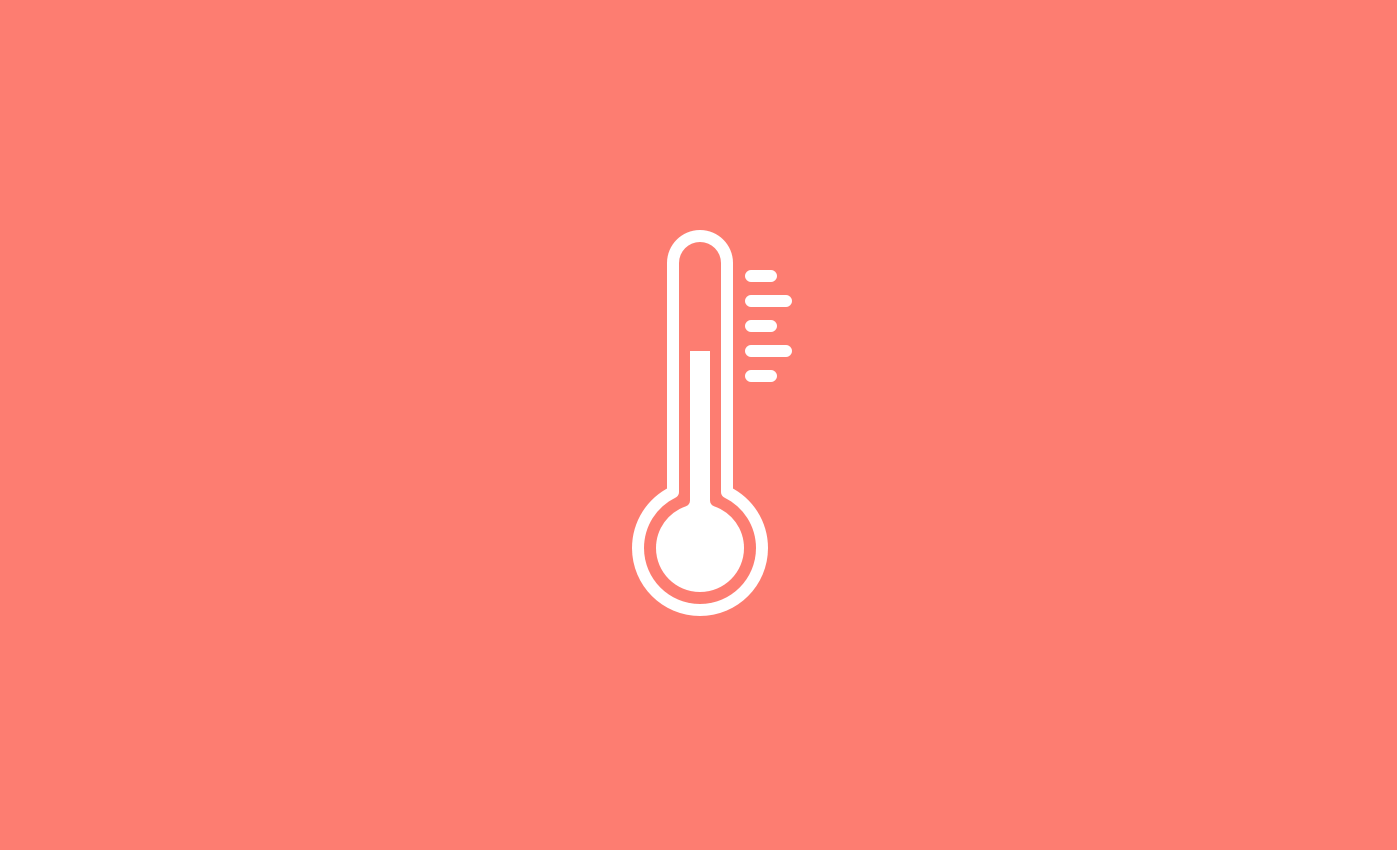Are you working with the right temperature?
Productivity
There are many factors that play a significant role in our productivity and one of them is working in a comfortable temperature.
Working with the right temperature is key in order to do great work. We already mentioned this on “The Ultimate Productivity List”, but let’s go a little bit more in detail.
Why temperature matters
The outdoor and indoor temperature, depending on the work you do, has a great impact on your work performance. You might remember the feeling of hot days were all you could think of was how to stop sweating; and what about the cold days where you were sitting uncomfortable on your chair, rubbing your hands together and suddenly taking more breaks than usual to grab a warming cup of tea?
Thinking about it, those days were certainly not the most productive ones.
The indoor temperature affects several human responses, including thermal comfort, perceived air quality, sick building syndrome symptoms and performance at work.
Researchers found that the highest productivity comes at a temperature of 22°C (71.6°F). Above 30°C (86°F), productivity drops drastically by almost 9%.
Another study, conducted by the Cornell University, shows that raising the temperature from 20°C to 25°C (68°F to 77°F) reduces keystroke errors by 44% and increase the output by 150%!

Now, if you find yourself working in a big office you clearly have less control over the temperature than if you work in a very small office or from home. In this case, having a home office has some advantages:
At home we get to control many aspects of our environment – everything from the setup of our office to the lightning of our desk to the temperature in our room—which improves our comfort level and allows us to direct our focus to our work.
says Ron Friedman in his book “The Best Place to Work”.
A bigger office means more people involved, all with different needs: there will be people who always feel cold and people that run around in t-shirts all the time, no matter what.
But we can all agree, especially during the summer months, that we all struggle with constant temperature changes from walking around under the hot sun to entering a freezing office, shaking under the air conditioning getting the next cold.
So, considering the recent findings, you might want to turn off the AC and opt for warmer temperatures, saving money and raising productivity.
Caution though: women feel cold sooner due to a lower metabolic rate while men, on the other hand, are more sensible towards heat. Woman work therefore better at a temperature 2.5°C warmer than men.
Temperature and collaborative work
However, not just personal productivity is suffering from the wrong environment setup, but also interpersonal relationships and willingness for collaboration.
A study of the University of Colorado found out that there is a relationship between physical and interpersonal warmth.
“Warmth” is the most powerful personality trait in social judgment, and attachment theorists have stressed the importance of warm physical contact with caregivers during infancy for healthy relationships in adulthood.
Participants who held a hot (versus a cold) beverage judged the other person as having a warmer personality.
These findings show that it is important to make people feel comfortable and that keeping an eye on the temperature of a specific room can have a positive impact; not just when encouraging kids at school for collaborative group work but also when calling your next meeting with your team or a potential partner.
So what can you do to achieve a comfortable temperature?
1. Use technology
Integrate a self learning thermostat like Nest in your home or office. It will automatically adapt to your life and habits and also adapt to the seasonal changes.
2. Drink hot beverages
Drinking a hot beverages warms up your body so it is beneficial both during winter (by warming your body up) and also during summer (warming up your body to the threshold, so your sweat flow turns up and you end up cooler than you were before).
3. Choose the right clothing
Layers are key to keep you warm in winter, while long-flowing, loose-fitting and textured fabric is ideal for hotter days since it enhances the air circulation and keeps the fabric away from your skin.
4. Exercise
Doing regular physical activity will strengthen your ability to deal with different weather conditions.
At rest, your body produces around 25% of your body temperature. By building up more muscle mass you will have more muscles that are slightly contracted at rest, thus creating more body heat. At the same time, if you have a trained body you start to sweat sooner, thus cooling off quicker.



